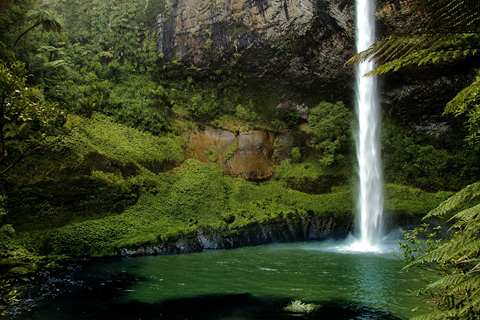
Rip currents are powerful, channeled currents of water flowing away from shore. They typically extend from the shoreline, through the surf zone, and past the line of breaking waves. Rip currents form as waves disperse along the beach causing water to become trapped between the beach and a sandbar or other underwater feature. The water converges into a narrow, river-like channel moving away from the shore at high speed. A rip current consists of three parts: the feeder current flowing parallel to the shore inside the breakers; the neck, where the feeder currents converge and flow through the breakers in a narrow band or “rip”; and the head, where the current widens and slackens outside the breaker line. Rip currents can occur at any beach with breaking waves, including the Great Lakes.
Rip currents can be killers. The United States Lifesaving Association estimates that the annual number of deaths due to rip currents on our nation’s beaches exceeds 100. Rip currents account for over 80% of rescues performed by surf beach lifeguards.
The greatest safety precaution that can be taken is to recognize the danger of rip currents and always remember to swim at beaches with lifeguards. The United States Lifesaving Association has calculated the chance that a person will drown while attending a beach protected by USLA affiliated lifeguards at 1 in 18 million. If caught in a rip current at an unguarded beach, how you respond could make the difference between life and death.
NOAA’s National Weather Service and National Sea Grant Program, in partnership with the United States Lifesaving Association, are working together to raise awareness about the dangers of rip currents. Research is also being conducted in order to develop and improve the ability to predict the occurrence and strength of rip currents. The goal of the awareness campaign and research is to reduce the number of rip current related fatalities.
A daily rip current outlook is included in the Surf Zone Forecast, which is issued by many National Weather Service offices. A three-tiered structure of low, moderate, high is used to describe the rip current risk. This outlook is communicated to lifeguards, emergency management, media and the general public.
With increasing coastal populations, rip currents will continue to be a serious hazard at surf beaches. This web site is designed to provide educational material as well as real time information about the rip current risk. The time you take to understand rip currents can help you protect yourself and your loved ones when visiting the beaches.
There is often confusion because various terms: Rip Currents, Rip Tides, and Undertow are used interchangeably. These are not the same phenomenon.
Rip Tides: Rip Tides are not Rip Currents. A distinctly separate type of current includes both ebb and flood tidal currents that are caused by egress and ingress of the tide through inlets and the mouths of estuaries, embayments and harbors. These currents may cause drowning deaths, but these tidal currents or jets are a separate and distinct phenomenon from rip currents. Recommended terms for this phenomenon include ebb jet or tidal jet.
Undertow: There is spirited discussion and disagreement among coastal scientists on the existence of a nearshore process called “undertow,” and hence there is not an agreed on definition for this word. Undertow is a term often and incorrectly used for rip currents. The best explanation for what many people attribute to “undertow” is as follows: After a wave breaks and runs up the beach, most of the water flows seaward; this “backwash” of water can trip waders, move them seaward, and make them susceptible to immersion from the next incoming wave; however, there is no surf zone force that pulls people under the water.
For more information see:
- NOAA Rip Current Site
- NOAA Rip Current brochure (PDF – large file)
- United States Lifeguard Association
All rights reserved. Outdoor Ed LLC is granted full permission to display the article and all associated material. This material may not be reproduced or extracted in any fashion electronic or otherwise without the express permission of the original author.


